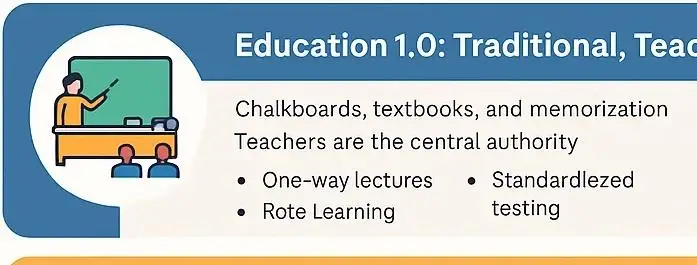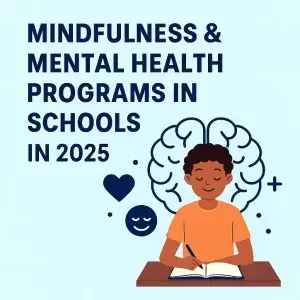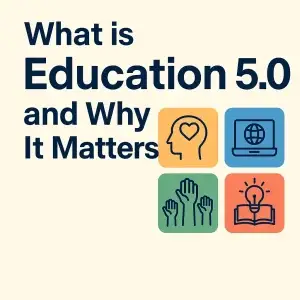
Top Education Trends: From Education 1.0 to 5.0 and the Future of Tech in K–12 Classrooms
As it always says: “The future of education isn’t just digital—it’s human.”
The Evolution of Education: From 1.0 to 5.0 in the K–12 Context
Education, like technology and society, has gone through significant transformations over the centuries. As the needs of learners and the structure of society evolved, education systems adapted, giving rise to new paradigms often referred to as Education 1.0, 2.0, 3.0, 4.0, and 5.0. These stages mark distinct shifts in how teaching and learning are approached, especially in the K–12 (Kindergarten through 12th grade) setting.
Education has come a long way—from chalkboards and passive lectures to artificial intelligence and emotional well-being. This article explores the major shifts in educational models, from Education 1.0 to 5.0, especially within the K–12 framework.
Education 1.0: Traditional, Teacher-Centered
Chalkboards, textbooks, and memorization define Education 1.0. Teachers are the primary knowledge source, and learning is rigid and standardized.
- One-way lectures
- Rote memorization
- Standardized testing
K–12 Impact: Quiet, orderly classrooms focused on exams and discipline.
Education 2.0: Interactive & Technology-Assisted
Technology begins to supplement traditional teaching with multimedia and group collaboration. Learning becomes slightly more dynamic and engaging.
- Group activities
- Multimedia resources
- Basic e-learning tools
K–12 Impact: Computer labs, early digital content, and more class participation.
Education 3.0: Student-Centered & Globally Connected
Education becomes personalized, creative, and connected to the world. Students take more responsibility in learning, supported by digital tools.
- Personalized learning paths
- Inquiry-based projects
- Global collaboration
K–12 Impact: Tools like Google Classroom and flipped learning become common.
Education 4.0: Skills for the 4th Industrial Revolution
This phase equips students with the skills to navigate AI, automation, and big data. Technology becomes embedded in all aspects of learning.
- 21st-century skills development
- Use of VR, AR, and AI tools
- Hybrid/remote learning
K–12 Impact: Coding, robotics, and adaptive learning systems in classrooms.
Education 5.0: Human-Centered & Purpose-Driven
The most recent model prioritizes ethics, emotional well-being, and sustainability alongside academics. It focuses on educating compassionate and responsible global citizens.
- Focus on mental health and empathy
- Global citizenship education
- Ethical use of technology
K–12 Impact: SEL programs, mindfulness, and community-based learning.
Comparison Table: Education 1.0 – 5.0
| Version | Teacher Role | Student Role | Technology Use | K–12 Example |
|---|---|---|---|---|
| Education 1.0 | Lecturer | Listener | Minimal | Textbooks, exams |
| Education 2.0 | Instructor | Interactive Learner | Moderate | Videos, group work |
| Education 3.0 | Facilitator | Creator | High | Flipped learning, projects |
| Education 4.0 | Coach | Adaptive Innovator | Very High | AI, coding, hybrid models |
| Education 5.0 | Mentor & Partner | Purpose-Driven Agent | Balanced | SEL, sustainability |
Download or Share
Prefer a visual format? Download the infographic here or view the presentation version.

